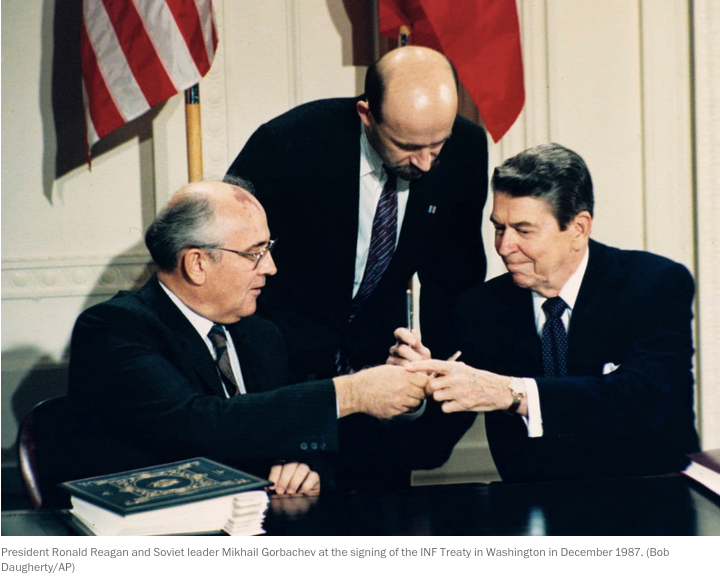Mikhail Gorbachev is a former president of the Soviet Union; George P. Shultz is a former U.S. secretary of state and is now a distinguished fellow at Stanford University’s Hoover Institution.
More than 30 years have passed since the day the leaders of the United States and the Soviet Union, meeting in Geneva, adopted a joint statement declaring that “a nuclear war cannot be won and must never be fought.” It was more than just rhetoric. Less than a year later, in Reykjavik, Iceland, they agreed on the parameters of future treaties on the elimination of intermediate-range nuclear forces, or INF, and the radical reduction of strategic nuclear arms. A year after that, in 1987, the first of these treaties was signed in Washington. The elimination of the entire class of nuclear missiles opened the way to a process of real nuclear disarmament.
The INF Treaty and subsequent treaties reducing strategic nuclear arms established an innovative system of verification, inspections, data exchange and mutual consultations to ensure that each side can confidently verify that the other is faithfully adhering to the treaty limits.
Reykjavik was a historic milestone also because the leaders of the United States and the Soviet Union agreed that the ultimate goal of the process of nuclear arms reduction should be the elimination of all nuclear weapons. The path to this goal is inevitably difficult, but the mutual understanding between the two leaders has borne fruit: As of now, the strategic nuclear forces of the two sides have been reduced to a fraction of what they were then.




